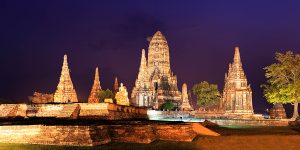Whenever we talk about leadership in Nepal, the immediate image that comes to mind is of politicians, who make promises but never deliver. The discourse of leadership in Nepal has been judged not by performance, but by the number of titles one carries on one’s business card, or the number of sycophants that hang out with one, the number of interviews and pictures that one sees in the newspaper or the minutes of exposure on television.
Leadership in Nepal is still represented by the badges with ribbons that people wear at functions, the sofa seats placed on the stage, or the individuals seated in the first rows, that people crowd around. Leadership in Nepal is still defined by how late one can attend events and how far one can exceed the allotted speaking time at meetings. It is still seen as a feudal phenomenon whereby there has to be a significant gap between the leader and the follower.
The concept of leadership especially in a democratic set up is something that has flowered in the West. The advent of corporations, the emergence of family trusts and foundations and the start of the concept of not- for-profits brought about the concept of an organization that polychromic societies found alien. People had to understand the rationale of having a chair- man elected in a board of directors rather than nominating one’s son or relative, when looking for someone to head a philanthropic organization, instead of appointing the eldest son to take over.
One of the Rotary Clubs in Nepal is identified with a mother, whose daughter is identified with another rotary club. The democratic substitution to leadership, contrary to hierarchy, is still seen as unacceptable. The Alumni of Hubert Humphrey Fellows, a US based fellowship elects its President based on seniority, therefore one can only head the organization once one has passed the most active part of one’s life.
Because of the political influence associated with leadership in Nepal, one visualizes having more than 10,000 people at Tundikhel listening in rapt attention while one speaks. The linking of a leader to a patron is another outcome of our feudal past, which makes it even more difficult to come out of the rut of the lopsided view of leadership.
The big question we forget to ask in Nepal, something that even our religions support, is to ask ourselves: “Who am I?” Am I the person in the business card, whose identity is defined by the name of the organization or the designation? If the name and designation is taken away, who am I? Do I have followers then? The answer is most pertinent to persons such as a recently retired bureaucrat or Minister who used to have hundreds of people hounding at their door while they held that position. A leader is someone who still has the respect and following, even without the label of an organization or designation.
In Nepal, the culture of doing and delivering without noise is not seen as a leadership trait, while globally, leadership credibility is about constant and consistent delivery. Therefore, work of people like Dr Ram Shrestha of Dhulikhel Hospital, who created one of Nepal’s finest institutions in 15 years, goes unnoticed.
It is individuals like Dr Ram Shrestha that keep societies going. In every family, society and community, we find individuals, who would take the initiative to reach out to those in need, whenever there is grief or sickness in the family. There are these familiar faces that we find at hospitals, bringing new patients every time or at the cremation ghats of Pashupati, helping people in the execution of their final journey. Even though they have been helping for decades, these people are never noticed. The same goes for teachers, who believe in imparting education, unlike many others whose primary focus is on maintaining a smart face for a newspaper interview to show their dedication to education. Leadership is about replacing one’s desire for publicity with real action.











